Mexico is a partner country that first signed an equal treaty with Japan after Japan opened up.
Since then, a friendly relationship has continued. Group immigration from Japan to Latin America also began with Mexico.

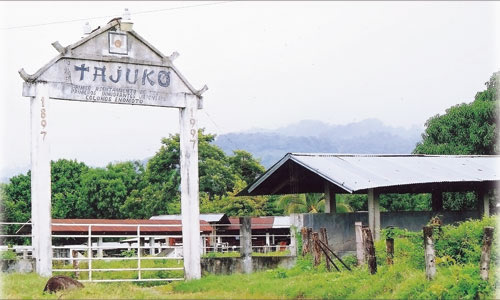
The Tafuko farm in Acacoyagua, Mexico. Consultations were Held to Establish the San-ou Union.
The severe reality faced by the colonialists
Acacoyagua is a village near the southern tip of Mexico. This is the location of the Tafuko Farm, which was opened about 120 years ago by Japanese people. The farm has been handed down through the generations and continued to be managed together by fourth-generation Juarez Yamamoto Javier, who inherited it. The farm is mainly a cattle grazing farm, but about three years ago the change was made to plant hardwoods and fruit trees in consideration of environmental conservation.
The first mass immigrants from Japan to Latin America came to Mexico. This was carried out by the Shokumin Kyokai, established by ENOMOTO Takeaki, who served in key positions in the Meiji Government such as Minister for Foreign Affairs and was enthusiastic about promoting colonial activities overseas. In March 1897, 36 young people from Iwate, Miyagi and Aichi prefectures boarded a ship at Yokohama Port and set off as "Enomoto Colonization Party" for Escuintla, a town near Acacoyagua. Their purpose was to grow coffee on land purchased from the Mexican government by the Shokumin Kyokai.
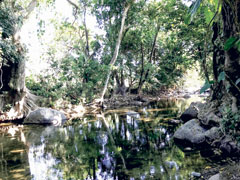
"Management that values the environment and considers future generations"
A stream flowing through the Tafuko farm. In the future trees are planned which will include fruit trees such as mangoes etc.
However, after the party arrived in May, and nearly two months later it was the rainy season. The land that had been prepared for them was a jungle, and no matter how much they cut back the vegetation and cultivated, it was immediately covered in greenery. In this area, it was common to conduct agriculture in the open fields during the dry season between December and around March of the following year, and then to conduct open burning immediately prior to the rainy season to sow the seeds. With 7 months until the dry season and the season for planting coffee seedlings having already passed making it difficult to obtain seedlings, this was a tragic story of a lack of prior investigation.
There were also a lot of mosquitoes transmitting malaria and the weariness of the pioneer labor and unsanitary environment brought about a lot of illness. Under such circumstances the colonial program soon failed with 10 members escaping about two months after settlement and the remittance of funds from Japan also stopping.
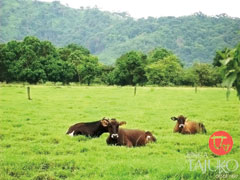
Cattle grazing. About 120 years ago, the first generation carved this farm out of the wilderness.
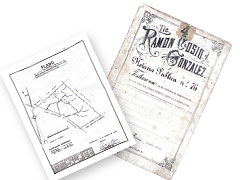
A farmland contract. The names of the directors at the time of establishment can be seen.
Representative of the Tafuko Farm: Mr. Juarez Yamamoto Javier
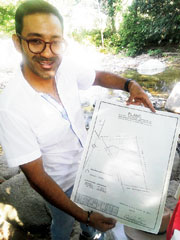
"Desire to deepen the relationship with Japan"
Mr. Juarez Yamamoto Javier
"I also belong to the Acacoyagua Edomura Association, a group of people of Japanese descent. We also provide information for customers that come from Japan. Japan and Mexico are partners. We are helping to deepen that friendship."
Union established by survivors
However, in spite of the circumstances, some of the group stayed in the area and began their own development work. They began running a general store in the town and launched the Tafuko farm, forming the San-ou Union in 1901. There were 6 officers, and one of them, YAMAMOTO Asajiro, was entrusted with the operation of the Tafuko farm.
After this, the San-ou Union developed into the the Nichiboku Kyodo Gaisha and expanded its business. The company broke up in 1920, but the Tafuko farm continued and has now been passed down to Javier, the fourth generation counting from Asajiro.
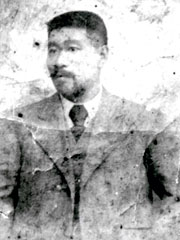
"Contributing to society with ranch management"
The management of the Tafuko farm was entrusted to YAMAMOTO Asajiro. Born in Aichi prefecture, he had participated in the Enomoto Colonization Party.
According to Mr. Javier, "My ancestors seemed to have a really hard time. They failed at coffee cultivation and then planted sugar cane to produce and sell rum. When we were digging up the farm about three years ago in preparation for tree planting, we found a bottle of rum in the soil."
The Nichiboku Kyodo Gaisha not only expanded its business activities, but also established a Japanese school and worked on the compilation of a Spanish dictionary. They also established electricity and water in the town and built a bridge. It is also said that every day the pharmacy that they ran gave free medicine to three poor people.
Looking ahead to the future of the farm, he noted that "This history is a pride for me. As a Mexican of Japanese descent, I will pass the Japanese sincerity, diligence and respect for others to the next generation. I am doing what I can to promote environmentally friendly farm management."
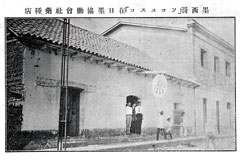
Pharmacy operated by the Nichiboku Kyodo Gaisha, a Japanese Mexican company, cooperative society. Also operates a general store.
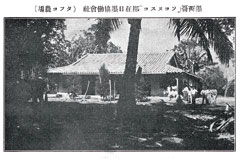
The Tafuko farm in 1911. There was also a brewery where rum was produced and sold.
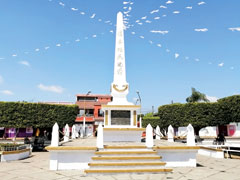
The Enomoto Colonial Monument, erected in Acacoyagua in 1968. It is still in the park here.
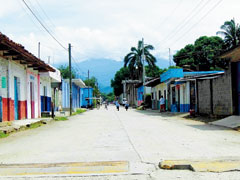
Acacoyagua today. Many Japanese descendants that have Japanese surnames live here.




scroll